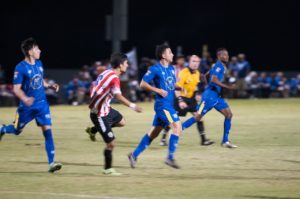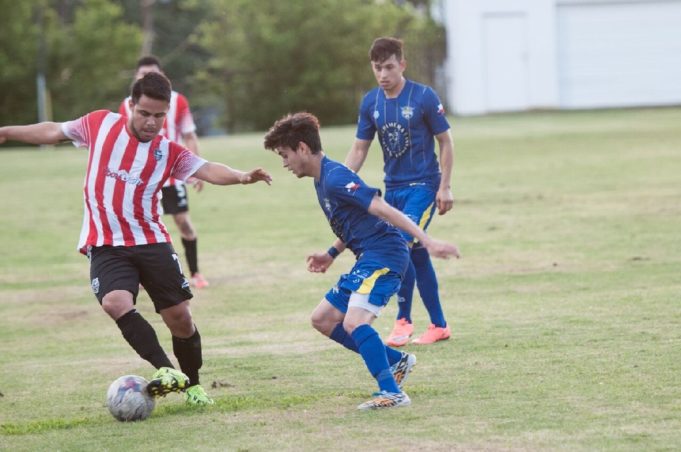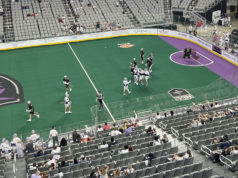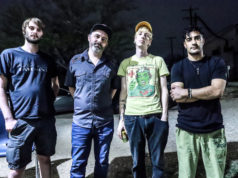You might have read how, back in the day, cowboys drove wild critters along the Texas Trail from Cowtown to Shreveport.
By “back in the day,” we mean mid-April.
On April 16, a local outfit known as the Fort Worth Vaqueros (Spanish for “cowboy”), accompanied by a group of their most animated fans, took a trip to Northwest Louisiana to play soccer against Shreveport Rafters FC. The teams hope the match represented the start of a historic rivalry. They’ve even given it a name rooted in the cities’ shared past: The Texas Trail Series.
The idea behind the title came from Rafters co-owner Will Broyles.
“I am a huge history buff,” he explained. “When you’re promoting a soccer series like this or anything else, if you can root it in the history of the two cities, it makes it more impactful and meaningful.”
 The Texas Trail ran between the two cities, with cattle driven from Fort Worth to Shreveport for distribution down the Mississippi River.
The Texas Trail ran between the two cities, with cattle driven from Fort Worth to Shreveport for distribution down the Mississippi River.
“The Texas Trail goes back to early 1800s,” Broyles said.
It followed paths long established by the Caddo Indians. Shreveport is in Caddo Parish, and Broyles pointed out that the name “Texas” comes from the tribe’s word for “friend”: “tejas.” The development of a friendly rivalry along the old trail is the ideal result for these National Premier Soccer League franchises.
“Both teams, they want to go out and win regardless if it’s a cup game or a league game,” noted Vaqueros coach Mark Snell. “It will turn into a rivalry because we want to have the trophy.”
The winning team will retain a set of mounted cattle horns. Shreveport got a leg up on acquiring the talisman with a win in the first game of the two-leg series. It was an unusual contest.
“We planned to play one goalkeeper each half. The agreement was that we would play by NPSL rules, with which there’s no re-entry, meaning once you’re subbed off, you’re subbed off. We pretty much dominated the game, had a lot of chances. Their goalkeeper played very well,” Snell explained.
“The second half, we subbed our goalkeeper in. We only bring two goalkeepers, of course. Within ten minutes, there was a bad back pass to the goalkeeper and he had to come out and take down with a strong tackle the opponent and it was a last man call, meaning it was an automatic red card. So that was a PK (penalty kick) and they scored on that. And we had to put a field player in goal as well as play a man down.”
The Vaqueros kept it close, but Shreveport won the game 2-0. It was effectively a preseason game, and the first in the expansion-Rafters’ history. It’s possible that this kind of unusual match could indeed fuel a rivalry, with fans likely to remember its unique circumstances. It turns out a lot of Vaqueros fans were there to see it. The team’s supporters group took a bus to the Port City for the game (and maybe the casinos a bit, too). Snell appreciated their support on the road.
“We are beyond fortunate with this group. They call themselves the Panther City Hellfire,” said Snell. “These guys are just die-hard soccer fans.”
Broyles took notice of the visiting crew.
“The fans of Fort Worth were impressive,” he said.
Broyles also indicated that the Hellfire did more than just cheer for their team.
 “They set the tone for that game, they set the tone for our fans for the season,” he noted. “Because everything was new, nobody in our crowd knew how the stands looked. When the Fort Worth contingent marched in with drums and flags, it gave us something to aspire toward. Our guys rallied. They got together the next game and we had drums. Now we actually have a trombone in our supporters group. We’ve got the flags.”
“They set the tone for that game, they set the tone for our fans for the season,” he noted. “Because everything was new, nobody in our crowd knew how the stands looked. When the Fort Worth contingent marched in with drums and flags, it gave us something to aspire toward. Our guys rallied. They got together the next game and we had drums. Now we actually have a trombone in our supporters group. We’ve got the flags.”
Fort Worth, then, may have helped fuel this budding rivalry by showing the Rafters’ own passionate fan club, now known as the Riverjacks, the right path to follow. Broyles expected many of his squad’s fans to travel the Texas Trail (whose route I-20 mirrors) tonight, when the series concludes with a game at the Vaqueros’ Martin Field. Perhaps they’ll be able to say they saw something historic.












